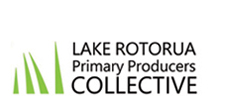Nutrient Management Plans with Lee Matheson
INTRO
Lee Matheson is a director at Perrin Ag Consultants, a leading provider of nutrient advice for farmers from Rotorua and elsewhere. He manages a team of consultants that provide advice to farmers on farm systems, development options and nutrient management. Today Lee talks about working with farmers to optimise profit while reducing nutrient losses.
Lee Matheson – Perrin Ag

Lee Matheson – Perrin Ag
Farmers are facing increasing pressure to reduce nutrient losses from their farms, while still running a profitable business. Nutrient management plans can help achieve these dual objectives. To do my job effectively, I need to understand the farmer’s long-term goals, their current farm system and its nutrient footprint.
No-one knows their farm as well as the farmer. The starting point for developing a nutrient management plan is listening to the farmer and visiting the farm. Most farmers have tried a range of stock types, grazing systems and fertilisers, testing what works and what doesn’t. I combine the farmer’s expertise, physical results and my own local knowledge to give me the background I need.
Here at the Carr’s sheep and beef farm, we have contrasting flat and hill paddocks. The flats are drought prone but produce more feed if they get enough rain, plus they can be mowed for silage. The hill country catches more rain but are vulnerable to erosion, especially with heavier stock. Seasonal pasture growth on the flats and hills complement each other, giving the Carr’s flexibility on how they farm. All these factors need to be built into my nutrient and farm system advice.
Once I’m familiar with the farm’s physical resources, I can explore options to meet the farmer’s goals.
Computer models help me quickly test ‘what if’ scenarios. One useful model is Farmax which lets me model pasture production, feed demand, cash flow and profit.
The leading nutrient model is OVERSEER which produces a budget on how nutrients move through a farm system. This includes estimating nutrient leakage in terms of nitrogen leaching and phosphorus runoff. OVERSEER also models the effectiveness of different mitigation methods. Of course many of these mitigations cost money or reduce revenue, so I need to look at adjusting the Farmax model in a realistic way to try to minimise financial impact.
Here at the Paterson’s dairy farm, they are looking at introducing a stand-off pad. I’ll assess stand-off pad options and how they can be used to protect paddocks in wet conditions and reduce nutrient losses. The Patersons are also trialling a number of innovative farm system changes that initial research suggests will have a positive impact on reducing nitrogen leaching.
Once I’ve assessed the options, I’ll talk it through with the farmer. It may take a few iterations to get it right, especially when it means long-time frames and major investment. It’s important to recognise the farmer’s appetite for risk, and to help them stay ahead of regulation and market pressures.
I’ll then pull the information together into a nutrient management plan. There are different templates for these plans, depending on the needs of the farmer, their industry body and the local regional council.
Farmers are always adjusting their farm system and inputs, often in response to changing market conditions and new technologies. It’s important that we have regular farmer follow up to ensure their nutrient management plan stays up to date and remains relevant to their business and circumstances.
SUMMARY
Putting it all together into a nutrient management plan can give farmers confidence they are on the right track to reduce nitrogen and phosphorus losses, while still remaining profitable. Each of the good management practices showcased in this video series can add up to make a real difference to protecting water quality in our streams and lakes.
Bay of Plenty Regional Council Advice and Support Service
The Land Use Advice and Support service assists landowners in the Lake Rotorua catchment to meet the requirements under Proposed Plan Change 10.
The $2.2 million-funded service has contracted seven independent firms as Land Use Advisors who will work alongside landowners to determine the current state of nitrogen leaching from the property and if required develop a Nitrogen Management Plan. A level of business support may also be available for landowners who need to undertake major changes to their farm system.
To access the advice and support service, contact the Regional Council on 07 921 3377 or email adviceandsupport@rotorualakes.co.nz
Practical Resources
- More information about the Bay of Plenty Regional Council Nutrient Management Plans and Plan Change 10 (PC10)
- Fertiliser Association of NZ (FANZ) – What is a Nutrient Management Plan?
- The Nutrient Management Adviser Certification Programme (NMACP) defines the standards for people to meet to provide certified nutrient management advice.
- DairyNZ – Sustainable Milk Plans (SMP)
- Beef & Lamb – Land Environment Plans (LEP)
- New Fonterra Farm Environment Plans












